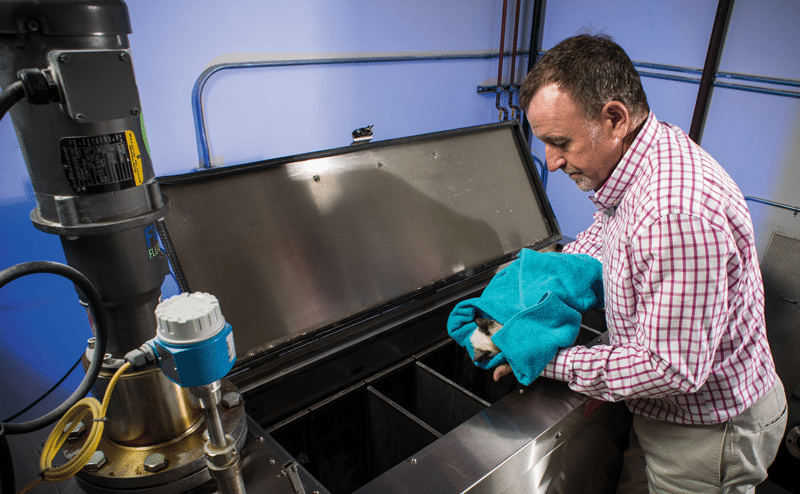How is Aquamation done?

Aquamation is a method of final disposition that is available for both our human and pet loved ones. The scientific name for this water-based process is alkaline hydrolysis. It is the same process that occurs as part of nature’s course when a body is laid to rest in the soil. A combination of gentle water flow, temperature, and alkalinity are used to accelerate the breakdown of organic materials.
The modern technology has been in use by universities and the scientific industries for over 25 years! It has been used for the final disposition of human bodies donated to medical science since 1995. The first pet facility was opened in 2007, and the first funeral home to use the technology was in 2011.
The Aquamation process is performed after any viewing or visitation services the family wishes to have. When it’s time for the process, the individual body is respectfully placed in a stainless steel vessel. Alkali is added to the process based on individual characteristics (weight, sex, embalming status), and the vessel fills with water. The solution of 95% water and 5% alkali is heated to 200-300°F, and gently circulated for the entire length of the process.
A commonly misunderstood fact is that it is actually the water that performs the breakdown during the Aquamation process, not the alkali.
A hydrolysis reaction is any type of reaction where bonds are cleaved by the insertion of water molecules. With alkaline hydrolysis, a base is added to water to create an alkaline environment. This changes the behavior of the water molecules, causing them to dissociate into hydrogen and hydroxide ions. The solution is only 5% alkali; 95% is water. Equally important to the process are the physical characteristics of the system (design), the continuous flow of the solution, and the heat. This all relates to collision theory and the rate and completeness of a reaction.
Our bodies are 65% water to being with, along with fat, protein, minerals, and carbohydrates. During the process, fats are reduced to salts, protein to amino acids and small peptides (which are groups of a few amino acids) and carbohydrates are reduced to sugars. The process breaks down all organic materials into their most basic building blocks, so small that no trace of protein or nucleic acids (DNA/RNA) remain. The organics are dissolved into the water, which consists of 96% water and 4% amino acids, sugars, and salts by weight.
Medical implants are not destroyed in this process. The metals are clean, sterilized, and look brand new after the process. These metals are recycled through a metal refiner to be made into new materials. The metal refineries are amazed at the pristine condition of metals from alkaline hydrolysis versus flame cremation.
Pacemakers and any other battery operated medical implants must be removed prior to flame cremation because the batteries explode at the temperatures used in the flame process. With Aquamation, the process is performed at a much lower temperature that does not react with the batteries. This means that the family does not have to incur the cost of pacemaker removal, nor does the loved one have to go through the surgical process of having the device removed. Operating staff are not at risk of injury. The pacemaker is recovered and recycled at the end of the process.
– Mitch, Bio-Response Solutions




